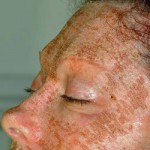Anytime the word ‘laser’ is used in plastic surgery, it conjures up images of immediate and dramatic results for removing wrinkles and tightening skin. But the face is not a video game or a Photoshop program and it just isn’t that easy. And there are many types of lasers used which can have quite different effects.
One concept to understand is the difference between ablative and non-ablative laser therapies which are used to facial skin issues. The term, ablative, means removing and specifically refers to laser resurfacing for the treatment of sun-damaged and aging skin. This is also known today as CO2 (carbon dioxide) and erbium skin resurfacing. Fundamentally, laser skin resurfacing is all about burning off the top layers of skin which results in less wrinkles and more youthful looking facial skin. The difference between CO2 and erbium is all about depth of the burn. The deeper you go, the better the results but the longer the recovery will be. For these reasons, this is why ablative laser treatments are also known as the ‘hot laser’ method.

Conversely, non-ablative laser treatments do not involve the burning off of the outer skin layer. They do not remove skin but are used to treat problems that lie in or below the skin, such as brown spots and red blood vessels. Because there is no burning involved, they are call ‘cold laser’ treatments even though they create heat during the treatment. Some evidence exists, and a lot of marketing, that these lasers can remove wrinkles and tighten skin. While in my Indianapolis plastic surgery experience, I have observed that is true, it is usually not up the level of most patient’s expectations. As a result, they often have to be combined with other types of cosmetic facial treatments (e.g., Botox, injectable fillers, microdermabrasion) to be visibly beneficial.
Dr. Barry Eppley
Indianapolis, Indiana


